Number Plate Guide
15 March 2016
Number plates help to identify a vehicle. Fixed to the front and rear of a vehicle, registration numbers are owned by the Secretary of State and are allocated as part of the process of registering and taxing vehicles.
The plate is allocated to the vehicle, not its registered keeper, and stays with the vehicle until the vehicle is broken up, destroyed or exported permanently out of the country. [caption id="attachment_1833" align="aligncenter" width="300"]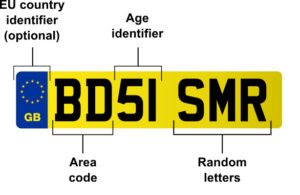 Number Plate Guide[/caption]
To learn more, read our Car Tax Guide by ALA GAP Insurance.
Number Plate Guide[/caption]
To learn more, read our Car Tax Guide by ALA GAP Insurance.
Number Plate Entitlement
Entitlement to the vehicle registration number will stay with the vehicle, even when it has changed hands. However, the registered keeper can transfer or retain the vehicle registration number before they get rid of the vehicle.Number Plate Format
In 1 September 2001 the current format for vehicle registration numbers was introduced for all new vehicles being registered. The format is two letters, two numbers, a space and a further three letters. The first two letters are the DVLA memory tag, the two numbers (the age identifier) indicate the age of the vehicle, and the last three letters are random.- DVLA Memory Tags - The first letter represents the region and the second a DVLA local office.
- Age identifier - The two middle numbers show the age of the vehicle down to a six month period - March to August or September to February. The age identifier changes on 1 March and 1 September.
- Random letters - The last three letters are random to give the vehicle car a unique identity.
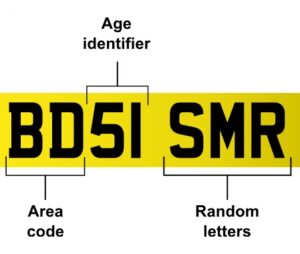 Number Plate Guide[/caption]
Number Plate Guide[/caption]
Displaying a Number Plate
DVLA’s Road Vehicles Regulations govern how vehicle number plates are designed, manufactured and displayed. It is illegal to alter, rearrange or misrepresent the numbers and letters on a number plate to form names or words, or in a way that makes it difficult to read. Individuals who fail to display the number plate properly may be fined up to £1000, or even have the registration plate permanently withdrawn.Personalised Number Plates
When an individual purchases a personalised number plate they are buying the right to assign that number to a vehicle. The vehicle can be registered in your name, or in the name of someone else (‘the nominee’). How to buy a personalised vehicle registration- Personal number plates can bought online from DVLA Personalised Registrations.
- The DVLA also holds Personalised Registrations auctions about 6 times a year and prices start from £130.
- Number plates can be bought from a dealer or from a motorist in a private sale. It is important to receive the V750 certificate of entitlement or V778 certificate of retention.
- the online service to take a registration number off a vehicle
- a V750 certificate of entitlement or V778 retention document
- the 11-digit reference number from the latest V5C registration certificate
- a credit card or debit card to pay any outstanding renewal fees
Getting a personalised number plate made
Personalised number plates can only be made up from a registered number plate supplier. Click here to find your nearest number plate supplier. Before ordering from a supplier, they will need to see original documents that:- prove your identity (e.g. your passport)
- show you’re entitled to the registration number (e.g. the V5 vehicle registration certificate)
Cherished Number Plates
Cherished Number Plates were traditionally seen as old registration plates. The first dateless number plates were issued from 1903 to 1963, using letters to stand for the region of issue, and sequential numbers as unique identifiers. As these number plates lacked a letter or number combination to indicate the year of issue, it meant these plates were dubbed ‘dateless’ and were eventually replaced after 1963. More recently, the term ‘cherished’ has come to be associated with private registrations, personalised car number plates or even just private plates.Funny Number Plates
Personalised number plates don’t have to be based on a person’s initials, they can also spell out funny phrases if you so wish. Below you will find three examples of some humorous and silly license plates. [caption id="attachment_1839" align="aligncenter" width="300"]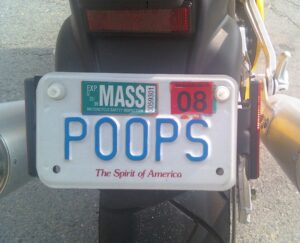 Funny Number Plate[/caption]
[caption id="attachment_1840" align="aligncenter" width="300"]
Funny Number Plate[/caption]
[caption id="attachment_1840" align="aligncenter" width="300"]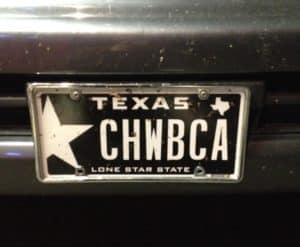 Chewbacca Number Plate[/caption]
[caption id="attachment_1841" align="aligncenter" width="300"]
Chewbacca Number Plate[/caption]
[caption id="attachment_1841" align="aligncenter" width="300"]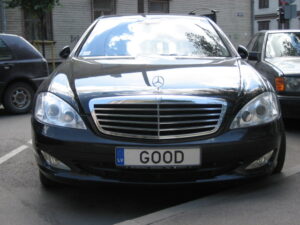 Good Number Plate[/caption]
Good Number Plate[/caption]
Expensive Number Plates
Expensive number plates are also an option, if you are fortunate enough to afford one. In fact, the DVLA estimates that in the last 25 years over £2billion in tax revenue has been raised at its various plate auctions in the UK. In 2015 the UK's 5 most expensive car number plates 1. '25 O': £518,000 Bought by Ferrari dealer John Collins in 2014. It is thought the plate was used on a Ferrari 250SWB, which was once owned by Eric Clapton. 2. 'F 1': £440,000 Bought by Bradford businessman Afzal Khan in 2008. The digits were then assigned to his McLaren-Mercedes SLR. 3. 'S 1': £404,000 Bought by an anonymous bidder in 2008. It is claimed to be Scotland's first ever number plate. 4. '1 D': £352,000 Bought by Lebanese businessman Nabil Bishara - despite the reference it was purchased a year before One Direction’s formation. 5. 'M 1': £331,000 Bought by Mike McCoomb in 2006, the mobile phone businessman claimed it was for his 10 year-old son. The world’s most expensive car number plate "1": £7million Bought By Saeed Abdul Ghaffer Khouri in 2008. A member of a wealthy Abu Dhabi family, Mr Khouri said, "I bought it because it's the best number." [caption id="attachment_1842" align="aligncenter" width="300"]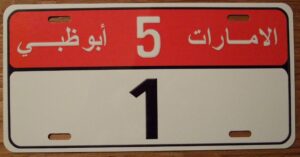 The world’s most expensive car number plate[/caption]
Click here to read more: Guides ALA Connect.
Number Plates Images Copyright
'Funny Number Plate' Image is licensed under the GNU Free Documentation License, Version 1.2
Attribution: Ryser915 (talk)
'Chewbacca Number Plate' is licensed under the Creative Commons Attribution 3.0 Unported license.
Attribution: Eric T Gunther
Image is licensed under the Creative Commons Attribution-Share Alike 3.0 Unported license.
Attribution: Jerry "Woody" from Edmonton, Canada
The world’s most expensive car number plate[/caption]
Click here to read more: Guides ALA Connect.
Number Plates Images Copyright
'Funny Number Plate' Image is licensed under the GNU Free Documentation License, Version 1.2
Attribution: Ryser915 (talk)
'Chewbacca Number Plate' is licensed under the Creative Commons Attribution 3.0 Unported license.
Attribution: Eric T Gunther
Image is licensed under the Creative Commons Attribution-Share Alike 3.0 Unported license.
Attribution: Jerry "Woody" from Edmonton, Canada